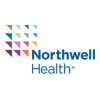
Long-term Effects of CPAP on Lipidemia and Hs-CRP Levels in OSA Patients
Obstructive Sleep ApneaCoronary Heart DiseaseThe increased risk of atherosclerotic morbidity and mortality in patients with obstructive sleep apnea (OSA) has been linked to hypertension, insulin resistance, dyslipidemia, and systemic inflammation. The relationship regarding obstructive sleep apnea (OSA) and lipidemia and systemic inflammation is far from conclusion for obesity as a strong confounding factor.

The Use of Heliox in Obstructive Sleep Apnea Syndrome
Obstructive Sleep Apnea SyndromeThe goals of the project is to evaluate the effects of Heliox therapy on obstructive sleep apnea syndrome (OSAS).

The Impact of Ergonomic Circadian Light on Hospitalized Stroke Patients in a Rehabilitation Unit...
StrokeSleep Apnea Syndromes2 moreThe purpose of this study is to investigate the impact of exposure to ergonomic circadian light on physiological and mental parameters in stroke patients admitted for rehabilitation.

Weight Loss and Obstructive Sleep Apnea
Obstructive Sleep ApneaThe purpose of this study is to evaluate the effects of moderate energy restriction on the body adiposity, severity of OSA, blood pressure, sympathetic activity, oxidative stress, inflammatory biomarkers, metabolic profile and endothelial function in obese patients with OSA.

Treatment of Obstructive Sleep Apnea in Chronic Kidney Disease
Sleep ApneaObstructive2 moreThis study is being conducted to determine whether treatment of obstructive sleep apnea (OSA) in patients with chronic kidney disease (CKD) improves kidney function. Half of the participants will receive continuous positive airway pressure (CPAP) treatment for their OSA in addition to their regular CKD treatment, while the other half will only receive their regular CKD treatment.

Effect of CPAP Treatment on Glycemic Control in Gestational Diabetes: A Pilot Randomized-Controlled...
PregnancySleep-disordered Breathing1 moreClinical trial on effects of continuous positive airway pressure (CPAP) on glucose levels in pregnant patients with sleep-disordered breathing and gestational diabetes

Tailored Treatment to Enhance Risk Perception in Sleep Apnea
Obstructive Sleep Apnea (OSA)Obstructive Sleep Apnea (OSA) is seen in approximately 6% of Americans. It is a serious medical condition with significant medical and psychological consequences, including diabetes, hypertension, and cardiovascular disease. The treatment of choice for OSA is Positive Airway Pressure therapy (PAP). PAP supplies positive pressure to the upper airway creating a "pneumatic splint" to keep the airway open during sleep. Adherence to PAP is notoriously low, with as few as 50% reaching minimal guidelines for adherence. One comprehensive review of adherence research found that adherence to PAP was less than that for any other medical disorder. The problem of adherence is significant not only because of the medical consequences that can ensue, but also because third party payers have begun to refuse to pay for PAP therapy when adherence is less than optimal, even in the face of clinical improvement. This is a critical time to address this problem. This research study is designed to identify methods that may help people respond to PAP, the most common therapy for OSA. Identifying these methods may be an important way to better care for patients with obstructive sleep apnea. With this research, the investigators hope to find ways to help people have a better response to treatment and a better quality of life.

The Efficacy of Tongue Stabilizing Device in Patients With Obstructive Sleep Apnea
Obstructive Sleep ApneaThe coordination of swallowing and breathing is an important mechanism because the route for air and deglutition is partly shared in the pharynx. Tongue Stabilizing Device (TSD) is a preformed appliance for Obstructive Sleep Apnea (OSA) that protrudes the tongue and improves upper airway structure and function during sleep. Investigators will attempt to assess efficacy of TSD therapy on OSA and the physiological change of swallowing and breathing routes in OSA patients during sleep.

3D-Printed CPAP Masks for Children With Obstructive Sleep Apnea
Sleep ApneaObstructive2 moreThe purpose of this study is to determine whether patient-specific computer-aided design (CAD) and three-dimensional (3D) printing can be utilized to produce personalized, effective continuous positive airway pressure (CPAP) masks for children with severe obstructive sleep apnea (OSA) and craniofacial anomalies who encounter significant difficulty using CPAP because of poorly fitting masks despite exhausting available commercial mask options.

Tiagabine to Enhance Slow Wave Sleep in Patients With Sleep Apnea
Sleep ApneaObstructiveObstructive sleep apnea (OSA) is common and has major health implications but treatment options are limited. Interestingly, the severity of OSA is profoundly reduced in deep sleep (called "slow wave sleep"), potentially via an increase in the stimulus required to arouse from sleep. Here the investigators test the idea that the medication called "tiagabine" improves slow wave sleep and reduces OSA severity. The investigators will also test whether tiagabine raises the arousal threshold (more negative esophageal pressure), and whether detailed OSA "phenotyping" characteristics can predict the improvement in OSA severity with this intervention.
